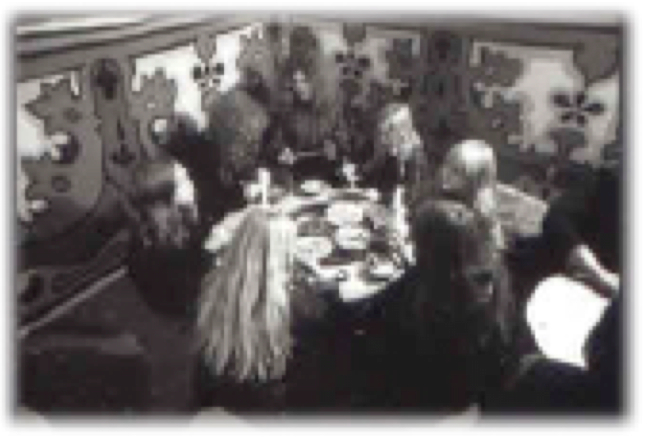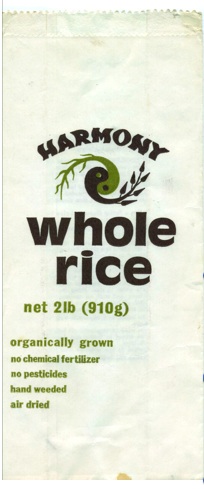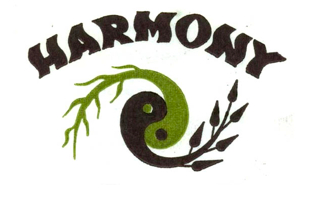This was a speech I gave at the Harmony in Food and Farming conference in Llandovery, Wales in July 2017.
Please click here to see video clips of the Prince of Wales, Patrick Holden and myself during the conference, which was organized by The Sustainable Food Trust. It aimed to develop an agricultural perspective on the ideas propounded in the book 'Harmony' by HRH The Prince of Wales and Tony Juniper.
In 1967 Joni Mitchell wrote a song called Woodstock that included these lines:
“We are stardust, We are golden
We are billion year old carbon
And we got to get ourselves
back to the garden”
We are indeed ‘billion year old carbon’ – the average person of about 80kgs/176lbs contains about 15kgs/33lbs of carbon. That ancient carbon is in our bones, our muscle, our fat and our bloodstream, as carbohydrate, fat, protein and other compounds. The carbon in our bodies may have been previously in soil, in trees, in charcoal, in dinosaur turds, in mosquitoes, in honey... It was everywhere before it ‘reincarbonated’ in us. Carbon is immortal. And it is stardust.
A billion or so years ago a very hot star kept getting hotter. As it got hotter, it formed hydrogen, then carbon, then oxygen and then the other elements that we know.Sir Fred Hoyle, the great astrophysicist, described this as ‘stellar nucleogenesis’ – stars creating atoms.
When that star got too hot it exploded, became a ‘supernova’ and blasted its carbon, oxygen, hydrogen and rock into space. Those chunks of rock and elements consolidated to form our solar system, with a sun that is still burning today with the remaining heat of the star that formed it a billion years ago.
Carbon is a promiscuous atom, it has 4 points where it can ‘mate’ with other elements. That’s why there are so many carbon-based molecules and why carbon is the foundation of all living things. Where there’s life, there’s carbon.
According to Hoyle, life, in primitive form, was everywhere. This was called ‘Panspermia.’
Life in rock was called ‘Lithopanspermia.’
Life was fungi. That life bumbled along, depending on acid rain from the very CO2-rich atmosphere a billion years ago to break down carbon that was stored in rock. Then a miracle happened that changed everything.
Bacteria called cyanobacteria became able to combine carbon dioxide CO2 from the atmosphere with H2O water, using sunlight energy, to make carbohydrate C6H12O6, whilst excreting oxygen. That carbohydrate was the sugar that is the basis of all living energy in plants and, eventually, in animal life too.
Once this happened, one can speculate that the rock-eating fungi saw their chance and organised the cyanobacteria into chain gangs, maximising their potential to capture carbon from the carbon dioxide-rich atmosphere, then at about 95% CO2.
These became algae, then simple plants, all busy making sugar to feed their own growth and, more importantly, to nourish the growth of the fungi that created them.
The fungi worked with other microbes in the soil, thriving on the sugar coming from the plants and delivering back to 'their' sugar-making plant all the mineral nutrients that they needed to grow. Plants died and decomposed. Fungi and bacteria died and decomposed. The carbon-rich detritus of their existence rotted down to become what we know as ‘soil’ – a most precious resource because it is the perfect habitat for fungi and bacteria and a rich source of recycled nutrients for plants.
This soil built up over millions of years, producing rich plant growth that eventually could support the large life forms such as dinosaurs and brontosaurs that existed in the ‘Carboniferous’ age.
This was the soil that early pioneers found in the American Midwest, rich in organic matter that ran very deep thanks to the 3 metre roots of prairie grasses.
When my great grandfather began to plough virgin prairie in Nebraska back in 1885, the soil on our farm contained over 100 tonnes of carbon as organic matter (organic matter in soil is approximately 50% carbon). By the time I was born in 1944 this was down to about 20 and now it is closer to 10, totally dependent on fertilizer and pesticides.
Farmers are frugal, on our farm we grew and processed almost all the food that we ate, only buying in commodities like flour, salt, sugar and soap that we couldn't make on the farm. Old calico flour sacks were washed and recycled as clothing, overalls for the boys and dresses for the girls.
Some enterprising flour companies printed pretty patterns on their flour bags when they realised this was happening. My mother and her sister Thelma wore Nell Rose flour sack dresses.
The men were frugal too, but they were unwittingly wasting the most precious resource on the farm, the soil. As the poet Wendell Berry put it:
"We didn't know what we were doing because we didn't know what we were undoing."
What we were undoing was all the decomposed plant matter that had been accumulating ever since those first Cyanobacteria sped up the process of life on Earth.
The destroyed soil lost its water holding capacity and lost its structure and integrity. The result was the great Mississippi floods of 1927 when the river was 60 miles wide from April to October, sparking the Great Migration of African-Americans to northern cities as their farms were submerged for half a year.
Then in the 1930s the Dust Bowl triggered another migration, of "Okies" from their farms in Oklahoma, Kansas and western Nebraska as their farms became submerged in dust and dirt. Richard St. Barbe Baker, an Englishman who founded Men of The Trees in 1926 and was a founder member or the Soil Association, helped restore the broken soils of the Midwest. Operating under the banner of President Roosevelt's Civilian Conservation Corps he oversaw 3 million men who planted 10 billion trees between 1933 and 1940. (These men also made good soldiers in WW2).
Tractors also played a destructive role, they could plough twice as deep as a horse-drawn plough, bringing up fertility and carbon from deeper in the soil. My Uncle Floyd (pictured with me in 1947) still used horses to draw his 8-row planter because horses didn't compact the soil. Tractors did, weakening soil structure.
This experience alarmed people in Europe. In Britain Eve Balfour wrote "The Living Soil" which proposed a new approach to agriculture that worked with nature and became known as 'organic farming.'
Eve Balfour collaborated with Dr. Innes Pearce who had shown at the Pioneer Project in Peckham that low income families did much better if they understood the basics of good nutrition and domestic hygiene.
Together they formed the Soil Association in 1947 on the premise that good farming would produce heathy food to nourish healthy people and create healthy societies.
My introduction to organic food and healthy eating came via the Japanese guru Georges Ohsawa, author of Zen Macrobiotics. I imported the books to the UK and sold them via various bookshops.
I sold brown rice snacks at the UFO Club, where the Pink Floyd were the house band. In February 1966 I opened a restaurant in Notting Hill to spread the macrobiotic message. In 1968 my brother Gregory opened Seed restaurant, our larger restaurant in Bayswater, London.
Getting ourselves back to the garden
ZEN MACROBIOTICS - Taoism
Balanced - Yin and Yang
Organic - Sustainable
Wholegrain
Food for health
'Justice' (Fair)
Japanese (Miso, Nori, Tamari)
No additives, no hormones
Avoid sugar
Eat only when hungry
Exercise and Activity
Like the Stoics mentioned in the Prince of Wales’ book "Harmony" we believed in "an attunement between human nature and the greater scheme of the Cosmos." We saw this through the prism of Daoist yin and yang philosophy and saw it as the key to a long and happy life ('macro' = 'big, long', 'bios' = 'life').
When we launched a range of macrobiotic food products in 1970 we branded them "Harmony" with a trademark that was a Yin Yang symbol with leaves and roots.
The company went on to become Whole Earth Foods a decade later - unfortunately 'Harmony' was a brand we couldn't register in our key European markets.
When I launched Whole Earth cornflakes in 1997 a friend Dan Morrell, who had founded Future Forests (later to become the Carbon Neutral Company) asked me if I'd like to take the corn flakes 'carbon neutral' - a term he originally coined. . He then commissioned Richard Tipper of the Edinburgh Centre for Carbon Management to measure the carbon footprint of the cornflakes.
To our pleasant surprise we had to plant hardly any trees to offset the carbon used in growing, shipping, processing, packaging and distributing the cereal because the increase in the organic matter on the farms where the corn was grown almost completely offset the carbon emissions from everything else. That's when I understood that, if we priced carbon into the cost of food, people would farm in a very different way. It is now urgent that we do so
The UN has said that we only have 60 years of farming left. Farming generates more than a third of the annual increase in greenhouse gas.
Volkert Engelsmann of IFOAM has calculated that we are losing farmland at the rate of 30 football fields every minute. None of these losses come from organic farming, which is restorative and regenerative.
Industrial farming wastes energy. It takes 12 calories of fossil fuel energy to produce one calorie of food energy. A farmer with a hoe uses 1 calorie of human energy to produce 20 calories of food energy. On a calorie-for-calorie basis a farmer with a hoe is 240 times more carbon efficient than a farmer with lots of equipment and inputs. More than 30 years of trials at the Rodale Institute farms in Pennsylvania show that organic farming can sequester 1 tonne of carbon per annum. They have also shown that once the soil is in good shape, the yields match those of industrial farming.
There is an effort afoot to attempt to bring market forces into bringing an end to this potentially disastrous loss of viable farmland. Part of this is to attempt to appeal to the self-interest of companies like Unilever and General Mills whose supply chain will suffer if farmland becomes unviable and unavailable.
The French National Institute for Agricultural Research published a report in 2015 that stated that if farmers could sequester 4 parts per 1000 of organic matter, that’s 0.04%, every year in their soil that would be enough to totally offset the annual increase in greenhouse gas emissions that is causing climate change. That’s without counting any transition to solar, wind or greater energy efficiency. As a result the French National Assembly voted a carbon price of €65 per tonne to take effect in 2020 and to include agriculture. French Agriculture Minister Stéphane Le Foll then announced his ‘4 per 1000’ initiative which became part of the Paris Climate Agreement. It was endorsed at COP 22 in Marrakech and 36 countries so far have signed up to participate in restoring soil, the capital base of every nation.
The Prince of Wales co-authored a children’s book called ‘Climate Change’ that shows how carbon goes into the atmosphere and how it comes back into the earth and the sea. The net annual increase is 16 billion tonnes.
A 3000 hectare biodynamic farm called Fattoria La Vialla in Tuscany Italy has its carbon measured every year by a team from the University of Siena. La VIalla are sequestering ‘7 per 1000’ every year. If everyone farmed like those 3 brilliant brothers in Italy, whose farm is roughly 1/3 pasture, 1/3 forest and 1/3 everything else (grape vines, cereals, fruit, vegetables), then we would not only cancel out the 16 billion tonne increase in CO2 but would see a 12 billion tonne reduction every year. Additional benefits would be greater biodiversity, cleaner water, less risk of drought and flooding and safer food. (Their wine is pretty awesome, too).
Going beyond stopping degeneration is the regeneration movement. This includes: Regeneration International, an offshoot of the mighty Organic Consumers Association in the US; the UN Food and Agriculture Organisation FAO; Soil and More (Netherlands); People 4 Soils (Slow Food movement); and Save our Soils (UK).
Corporations like General Mills are taking strong initiatives. They have 100,000 hectares of land from their supply chain to be organic by 2020 as part of their carbon reduction policy.
But we still burn food. One half of the annual USA corn crop is converted to ethanol using more energy to produce it than is embodied in the ethanol. It is mixed with gasoline to be burned as fuel. The US is now exporting oil and gas yet still burns vast amounts of food in the name of 'energy security.'
We still destroy forests. According to HRH the Prince of Wales this is at a rate of 15 football fields per minute. If we valued the carbon stored in those forests at $20 tonne each hectare would be worth $15000. Once the forest is cleared and then planted with soybeans it is worth $300 per hectare. HRH described this in a speech in 2008 as ‘The greatest example of market failure in the history of capitalism.’
We still burn wood. There is a false virtuousness to burning wood. 200,000 wood burning stoves a year are sold in the UK alone. Wood smoke is more harmful to health than smoke from coal, oil or gas. It takes a tree 50 years to sequester the carbon that is then consumed in a wood burning stove in 50 minutes. If a replacement tree is planted, will take 50 years to take that carbon back out of the atmosphere.
Wood has the resilience of steel and the load bearing capacity of concrete. 'Glulam' and other new wood technologies mean that wood can be used in 20 story buildings ('plyscrapers'), sequestering the embodied carbon in the wood for centuries. We should never burn wood, it's a terribly inefficient waste of carbon.
Biochar, or charcoal made from wood, is a way to convert wood by-products into a carbon rich substance that can be put in the soil and will stay there for decades or even centuries.
It dramatically increases the population of beneficial microbes in soil, delivering a healthier plant immune system, increased water retention and reduced loss of nutrients from leaching. It is the best use for woody material that is not suitable for building or furniture making. It is proven to help restore degraded soils and make them fertile and fit for farming again. There are many examples of its benefits: tomato growers use it to combat plant diseases and increase yields; it cures honey fungus, ash dieback, chestnut blight, phytophthora and other tree diseases; it helps cocoa farmers overcome the devastating impact of black pod. Stockholm uses it for all their new urban tree plantings as it enhances survival rates. In Qatar the Aspire Park now use it for all their new tree plantings, with gratifying results. Biochar in soil protects the beneficial microbes that are part of a plant’s immune system, its food supply and it’s water supply.
Farming and forestry would be transformed if carbon pricing were to be introduced for their activity. People would plant trees instead of growing wasteful biofuels. Prairie grass would replace corn in the Midwest. Farmers would adopt regenerative methods such as organic and biodynamic farming.
Farmers would profit from farming carbon in 2 ways:
An annual payment for any increase in soil carbon and a charge for any decrease in soil carbon
An 'interest' payment on the actual level of soil carbon on the farm. This would be effective at around 10% annually.
A typical organic farm would benefit to the tune of approximately £100 per hectare and an industrial farm would have to pay a carbon tax of as much as £100 per hectare. Farmers would change behaviour overnight and agribusiness behemoths like Monsanto, Bayer and John Deere would have to rethink their business model. Taxpayer-funded subsidies to farming could be largely phased out as carbon markets would trade the carbon credits.
Farmers could also insure against catastrophic events such as flood and drought that might impact on their soil carbon. However, farming with carbon in mind would reduce the likelihood of such damaging events.
Soil is Nature’s capital and the foundation of all life on Earth. Capitalism is about valuing capital and pricing it. Capitalism has failed to deal with carbon because industry, transportation and farming have been allowed to pollute freely at no cost. All other forms of pollution are nowadays strictly controlled for wider social benefit. It is time for carbon to be priced and traded like very other important commodity.
We can get 'back to the garden' - the Garden of Eden. We just have to price carbon and change the way we farm our beautiful planet.
"We are stardust, We are golden
We are billion year old carbon
And we got to get ourselves
back to the garden"













































